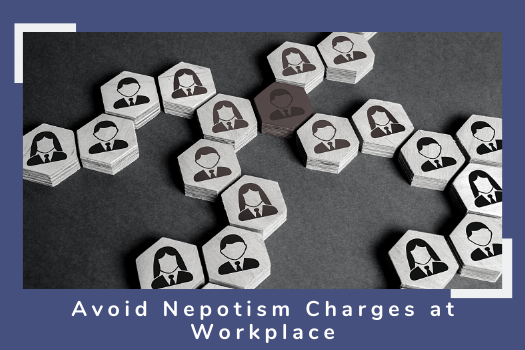Theory of Constraints TOC Talent Management - Part 2
Employee Engagement, Employee Relations, Rewards and Recognition
Case - I
When the case of Madhumita Sharma came to me in the last quarter of 2015, both she and her boss were frustrated with each other and the scenario was not only affecting the performance of Madhumita but that of the entire team. Madhumita was working with an automobile company as a Director – Client Management for just over a year. In the past, she had given a solid stellar performance in the company, such that in the previous 10 years of her association with the company, she already had THREE major promotions.
Earlier in 2015, Madhumita went on a maternity leave with her first child. The organization decided not to get a temporary replacement for her. Instead, her second-in-command was tasked to oversee her responsibility and report to the boss of Madhumita. All decisions were coming from Madumita’s boss. Things worked out fine until Madhumita came back.
For a year, before going on maternity leave, Madhumita enjoyed her freedom to make decisions and take the lead in all aspects of client management. But when she came back her boss decided that the dynamics when Madhumita was not around worked out so well that it should stay that way. She was asked to seek her boss’s decision for everything before she made any move. That didn’t sit well with Madhumita and for the first time she felt totally not in control and that new set-up had affected her performance leading to frustration. She did not welcome the idea of getting her boss’s approval for every step of the new business she was brewing.
Analysis & Recommendation - In this case, for an outsider, the boss might appear like a probable bottleneck on way of otherwise outstanding performer Madhumita. However, that wasn’t the case. We did a 360-degree review for Madhumita and her boss conducted a psychometric assessment using Extended DISC and mapped workflow processes of Madhumita before taking maternity leave and after her return. First of all, the personality of Madhumita and her boss were in conflict with each other.
Madhumita came across as a kind of leader who was driven to keep seeking bigger and better, and the act of exploration was central to her enjoyment of life. Her goal was to take in more and more. She had high energy levels, and along with that came a high need for excitement. Because of which, she tended to be a risk taker, and she didn’t mind being under pressure. In fact, she would view pressure as a positive thing. She didn’t like feeling constrained. In fact, she had a high need for freedom. She would tend to see a big, wide world of opportunity.
On the other hand, her boss came across as one among leaders who rely on a high degree of confidence. Over a period, he had trained himself to believe in his own abilities, he was slow to recognize the errors of his own ways. He lacked patience for any ideas that contradicted him. His team used to view him as arrogant but he would brush that aside, assuming that others didn’t understand the “real” state of affairs. He considered himself as “uncompromising” realists. He would rarely adjust his perceptions to make the world seem nicer. That’s why he was very clear in his mind that when Madhumita initially joined his team, he wanted things in a certain way and now since the work process changed in her absence, she must adjust to the new process and get going.
Neither Madhumita wanted to leave her job nor her boss wanted to lose a high-potential and high-performing employee. In her role, Madhumita was primarily responsible for generating new business and growing existing business across markets, customer base, and product sets. Finally, it was decided that Madhumita would involve her boss in all strategic decisions related to all new high-revenue clients. They also agreed to a monthly meeting to review new prospects and business challenges in new markets.
Case – II
The CEO of a packaging company contacted me in June 2015 to help him prepare a high-performing employee, the Operations Director, for scaling up the production capacity by more than double of the current capacity.
Ganesh Chandrasekaran was the Operations Director with this packaging company that specializes in the use of water soluble materials. GC had recently joined this company after its former Operations Director had quit after realizing that he couldn’t fix the never ending problems of the operations department. GC was having more than 20 years of experience. The management had high hopes for him. He was seen as someone who could turn around the operations department to meet its expected performance especially since it was the heart of the company. Failure in the operations department means failure to meet client requirements and eventual loss of customers.
Since GC first stepped into the company’s facility, he had worked long hours making sure the facility was ready for production every day, people needs were met and ample planning and preparation was done for future production. Thus, so far he had done an exemplary job. But the management knew that GC was at his peak. Any more work would make him crash and may affect his performance. In early June, the company had received confirmation that two of their customers had increased their order by 10 and 20 million respectively with 60 million projected sales for following 5-7 years.
Analysis & Recommendation – For this project, I asked Ganesh to take a psychometric assessment, spoke to his team members, and his family, and observed him at work for one week. He came across as a leader who had natural skepticism that made him less attentive to team dynamics. He was lacking an open or trusting attitude towards other people, and hence he needed to be in the workplace for longer hours. He had a strong drive to control the world around him, to have some influence on the variables that affect him. He merely attached a lot of “should” to his outlook on life. People should work a certain way, projects should be managed a certain way, and business should be run a certain way. Due to this approach towards work and people, he was finding it next to impossible to entrust and delegate work to others. He had very little patience for other people who he would consider as incompetent. Ina situation where he had to work with according to him less able people, he would work around them. He gave them minimal responsibility and did not include them on updates, rather than making an effort to fully engage them and discover their passions and talents.
He had set extremely high standards for himself and for people around him. He wouldn’t be much impressed when things went well, however, when things went wrong, his disapproval was loud and clear. His team members found it intimidating and demoralizing and it caused them to focus on avoiding mistakes than on really pushing themselves to stretch and grow.
Share your feedback.






